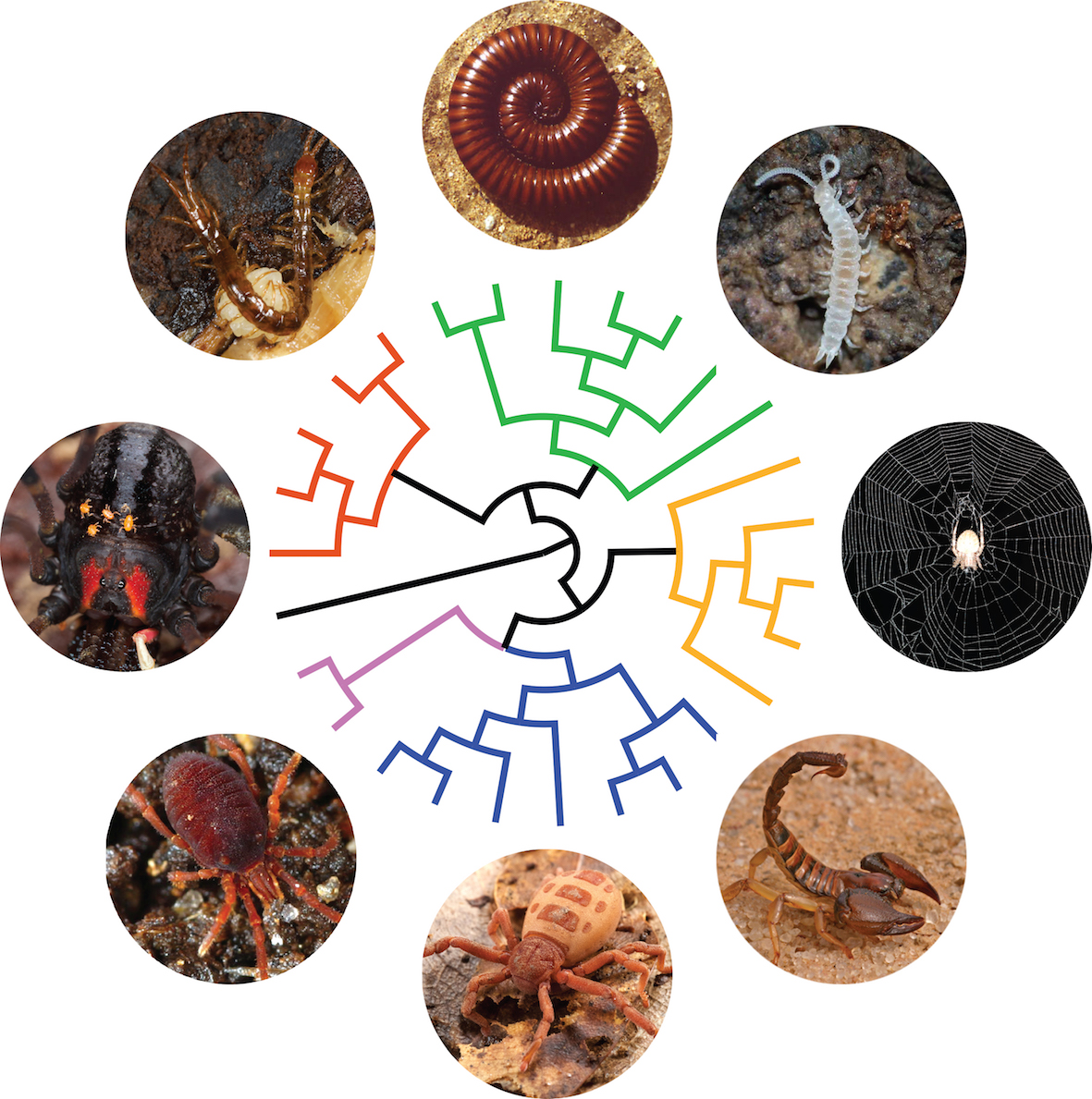Note: We are rebooting our "Life in the Lab" series, which features interviews of interns and visitors. This post is by our inaugural OMA Visiting Fellow Rosa Fernández García, who spent a month with us earlier this year. You can follow Rosa on Twitter at @Rosamygale. –Christophe
Please introduce yourself and your research interests.
I received my bachelor’s degree in Biology (major in Zoology) at Complutense University in Madrid, Spain. I got my master’s and PhD at the same university with a thesis about phylogeny and phylogeography of cosmopolitan earthworms. After that, I moved to the lab of Prof. Gonzalo Giribet at Harvard University where I was a postdoc during 3 years and a Research Associate for another year. In January 2017, I’ll move to Barcelona to work as a Research Fellow in the lab of Dr. Toni Gabaldón at the Center for Genomic Regulation.
My research addresses fundamental questions about evolution in invertebrates: in other words, I am fascinated by how, when and where biodiversity took its form, and why it is maintained. My main two animal groups of interest are terrestrial annelids (oligochaetes) and (pan)arthropods, particularly the earliest branching lineages and most scientifically neglected groups (chelicerates and myriapods).
How did biodiversity took its shape? Resolving the tree of life. Macroevolutionary patterns are generally what we see when we look at the large-scale history of life. It encompasses the grandest trends and transformations in evolution, such as the origin of bilateral animals or the radiation of arthropods. In order to understand how lineages are related to each other, I study macroevolutionary patterns in several groups of invertebrates through phylogenetics and phylogenomics. I currently lead a fruitful line of research dealing with phylogenomics of myriapods and chelicerates, having optimized protocols to sequence successfully single individuals of the rarest and smallest arthropods. We are getting closer to resolve the Arthropod Tree of Life!
Artist’s rendition of the Arthropod tree of life
When and where? I tried to understand the mode and tempo of animal diversification patterns through the integration of phylogeography, biogeography and paleogeography.
Why? Comparative transcriptomics and genomics is a very powerful tool to shed light on very interesting evolutionary questions, such as arthropod terrestrialization – one of my favorite new lines of research.
Why did you choose to apply to the OMA visiting fellowship programme?
Orthology inference is one of the key steps in phylogenomics. I had been using OMA for a few years and I wanted to learn how I could use it more efficiently in my ongoing projects.
What project did you work on during your visit?
My project focused on optimizing OMA runs for some big and challenging data sets that I was having problems with. Also, I was interested in learning how I could exploit hierarchical orthogroups for comparative genomics studies in arthropods.
Rosa and David Dylus at coffee break (photo by Arthur Dessimoz)
Was there any highlight or low point you’d like to share?
It was a great experience to be in the Dessimoz lab for a month. As a systematist with relatively limited bioinformatic background, it was absolutely great to exchange ideas with computer scientists interested in the same scientific problems but with a completely different perspective that mine. It was a very enriching experience.
Do you have any practical tip for future OMA visiting fellows?
One month was not enough for me, so try to stay longer if your project is ambitious. And ask Christophe to bring a Tête de Moine cheese in your last day, it’s delicious!
Editor’s note: If you are interested in the OMA visiting fellowship programme, consult this page.
References:
Fernández R, Laumer CE, Vahtera V, Libro S, Kaluziak S, Sharma PP, Pérez-Porro AR, Edgecombe GD, & Giribet G (2014). Evaluating topological conflict in centipede phylogeny using transcriptomic data sets. Molecular biology and evolution, 31 (6), 1500-13 PMID: 24674821
Fernández, R., Hormiga, G., & Giribet, G. (2014). Phylogenomic Analysis of Spiders Reveals Nonmonophyly of Orb Weavers Current Biology, 24 (15), 1772-1777 DOI: 10.1016/j.cub.2014.06.035
Fernández R, & Giribet G (2015). Unnoticed in the tropics: phylogenomic resolution of the poorly known arachnid order Ricinulei (Arachnida). Royal Society open science, 2 (6) PMID: 26543583
Novo M, Fernández R, Andrade SC, Marchán DF, Cunha L, & Díaz Cosín DJ (2016). Phylogenomic analyses of a Mediterranean earthworm family (Annelida: Hormogastridae). Molecular phylogenetics and evolution, 94 (Pt B), 473-8 PMID: 26522608
Fernández R, Edgecombe GD, & Giribet G (2016). Exploring Phylogenetic Relationships within Myriapoda and the Effects of Matrix Composition and Occupancy on Phylogenomic Reconstruction. Systematic biology, 65 (5), 871-89 PMID: 27162151
Sharma, P., Fernandez, R., Esposito, L., Gonzalez-Santillan, E., & Monod, L. (2015). Phylogenomic resolution of scorpions reveals multilevel discordance with morphological phylogenetic signal Proceedings of the Royal Society B: Biological Sciences, 282 (1804), 20142953-20142953 DOI: 10.1098/rspb.2014.2953
Rosa Fernandez, Prashant Sharma, Ana LM Tourinho, & Gonzalo Giribet (2016). The Opiliones Tree of Life: shedding light on harvestmen relationships through transcriptomics BioRxiv DOI: 10.1101/077594


